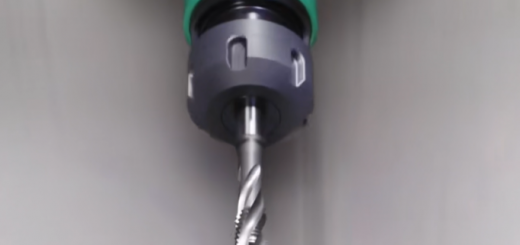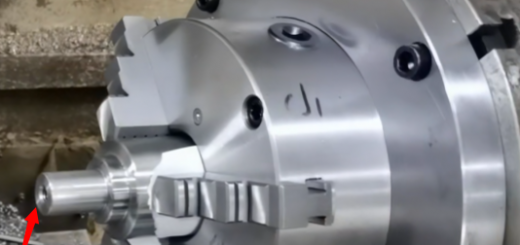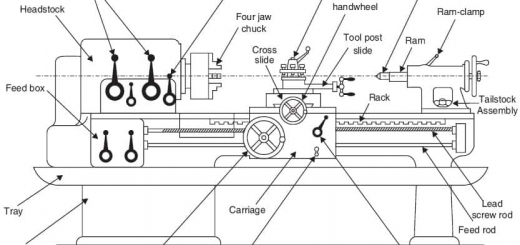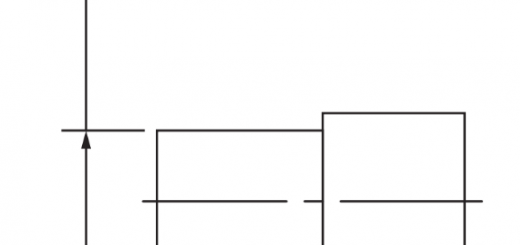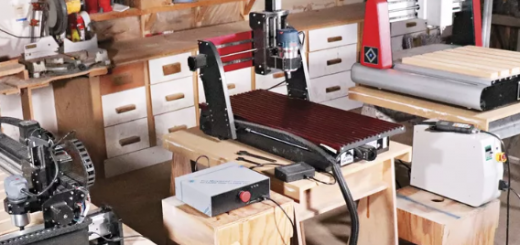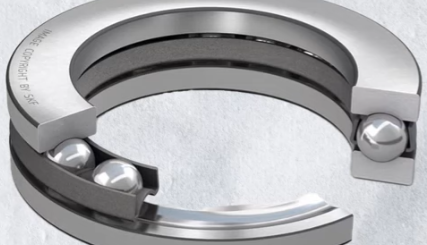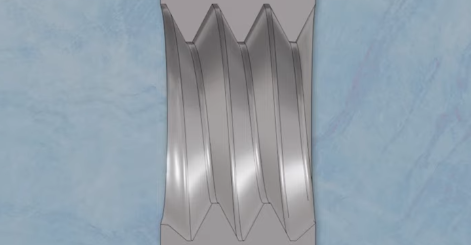Drill Bit Material Types – Hardest and Best Drill Bit for Different Metals
In this article, let’s take a look at an overview of drill bit materials, mainly covering the types, parameters, standards, hardness, selection, and the best drill bit for different materials.
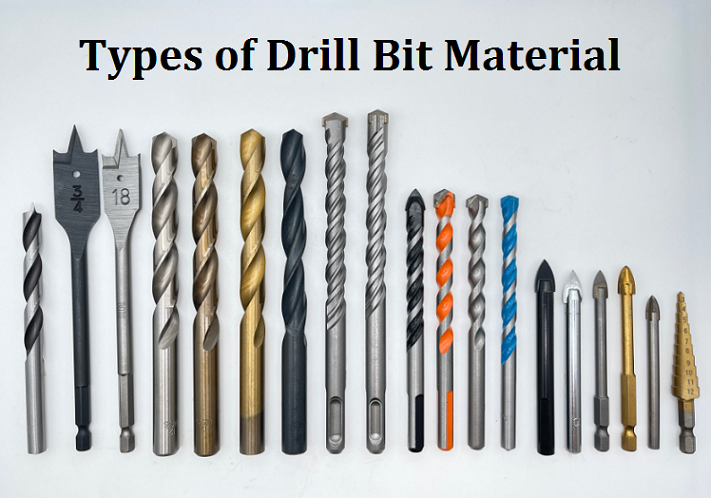
Types of Drill Bit Materials
Drilling machines come equipped with drill bits that are tailored for specific cutting operations. As these tools undergo wear and tear, they need to be manufactured using different materials and come in various shapes and sizes. Drill bits are made of different types of metals.
1. Carbon Steel
A type of drill bit is made of carbon steel, which can be separated into low-carbon and high-carbon steel drill bits. A low-carbon steel drill bit is probably one of the cheapest options on the market. The temper on this drill bit is low, making it possible for only soft plastic and certain softwoods to be worked on. In order to maximize their operational life, frequent sharpening is necessary. On the other hand, high-carbon steel drill bits are more resilient and better maintain their usability and shape over time. They are preferred while working on hardwoods and softer metals.
2. High-Speed Steel (HSS)
High-speed steel tools are regarded as good tool materials since they do not fail structurally at high temperatures. HSS drill bits outperform carbon steel drill bits in hardness and wear resistance and can be used for wood and metal drilling, including CNC drilling. HSS tools are not subject to overheating damage. Like other tools, their lifespan can be further enhanced by applying a titanium nitride coating, which increases lubricity while reducing friction.
3. Carbide
Tungsten carbide drill bits are some of the hardest and strongest drill bits available. They perform exceptionally well at drilling difficult materials like hardened steel, cast iron, and masonry under extreme temperature and pressure conditions. These drill bits demonstrate remarkable wear and heat resistance, allowing them to retain a sharp edge for prolonged periods. They excel at precision drilling and are useful for long-lasting tools. However, these carbides are very brittle and need to be handled carefully to prevent breakages.
4. Cobalt
Just like Cobalt drill bits, cobalt bits are also equally as famous. These bits are used for machining more challenging materials like stainless steel and other tough metals. Compared to HSS, cobalt bits are able to retain their hardness and resist overheating better. Still, cobalt retains its brittle nature as a coating.
5. Titanium Nitride
A very hard layer of titanium and nitrogen can be formed; therefore, drill bits coated with TiN are very hard and wear-resistant. The durability of these drill bits increases due to the low friction experienced while drilling, which reduces weakening and premature wear. TiN-coated drill bits can be used on plastic, wood, and metal. Operations can be performed at much higher speeds with the use of TiN bits, where they can outlast HSS drills by three to five times. TiN-coated drill bits are good for routine drilling operations.
6. Diamond
PCD, or polycrystalline diamond, is renowned as one of the hardest materials available today. It can also be used to sharpen glass, ceramics, and other difficult materials. The use of PCD in grinding is more effective than traditional cutting approaches. They can be more expensive than carbide tools, but their efficiency is unmatched. Moreover, PCD tools have a longer lifespan, outlasting tungsten carbide tools by as much as twenty times. Their expense is offset by their remarkable durability. However, these PCD tools are reactive with some materials, especially with ferrous materials like hot steel, which can lead to damaging reactions.
Aside from the basic materials, drill bits can be options with additional coatings. One variant is black oxide-coated drill bits, which are good against corrosion and suitable for humid or wet environments. They also help reduce wear and increase the lifespan of the tool. For soft metals, wood, and plastic drilling operations, black oxide coatings are helpful. They outperform standard HSS ones by 50% and are useful for general-purpose non-abrasive materials drilling. Bronze oxide coating is a type that has undergone tempering and stress relieving due to the cobalt steel or black oxide combination looks, which raises high-speed steel grades. It helps in making drill bits stronger to drill hard materials like stainless steel and cast iron. The last one is aluminum oxide-coated bits, which have high hardness, wear resistance, and thermal stability up to 800°C. The ability to extend tool life and oxidation resistance makes them usable on high-speed drills. Under adverse conditions, drill bits coated with aluminum oxide are priceless, especially while drilling tough metals and alloys.
What Are the Hardest Drill Bits – Drill Bit Material Comparison
| Drill Bit Material | Hardness | Uses | Durability | Cost | Other Features |
| Carbide (Tungsten Carbide) | Very High (HRA 90+) | Masonry (brick, concrete) | Extremely durable but brittle | High | High heat dissipation, holds the edge longer |
| Cobalt | High (HRC 65+) | Hardened steel | Good, but can be brittle | Moderate to High | Retains hardness at high temperatures |
| Diamond (PCD) | Extremely High | Ceramics, tiles, stone | Exceptional durability | Very High | Minimal surface damage, smooth precision finish |
| Titanium Nitrate | High | Hardened steel, most metals | Higher lifespan than HSS | Moderate | Difficult to sharpen, enhances strength |
| Oxide Coating (Black, Bronze, Aluminium) | Moderate | Various metal drilling | Good with HSS base | Low to Moderate | Reduces oxidation, improves heat resistance |
| High-Speed Steel (HSS) | Moderate (HRC 58-65) | General-purpose (metal, plastic, wood) | Durable, suitable for high-speed | Low to Moderate | Economical, lightweight design |
| Carbon Steel | Low | Soft materials (wood, plastic) | Less durable, prone to dulling | Low | Easy to manufacture, cost-effective |
Regarding drill bit standards, some of the most relevant ones are ISO 9001, ISO 14001, ASTM A228, ASTM A600, and ASTM A599.
How can I assess the quality or performance of drill bits?
- Diameter: The diameter of the drill bit is an important characteristic as it defines the hole size for machining operations. For proper interference fitting with other parts, the size has to be validated. Furthermore, larger drill bits result in higher torque requirements and must be operated more slowly due to the greater material removal capability.
- Length: A drill bit’s length signifies how deep a hole a person intends to drill. Some drill bits are made explicitly for very deep holes. Longer drill bits are less rigid, which makes them more prone to vibration.
- Cutting Angle: Various cutting angles affect the parameters and performance of drill bits. Common cutting angles are 118° and 135°. Some other angles are also more effective for other materials.
- Spiral Angle: Spiral describes the angle between the tangent of the spiral flute and the axis of the drill bit. Options include 18°, 30°, 45°, etc. These angles also affect the performance of drill bits. A larger spiral angle assists in smooth chip evacuation, while a smaller one is better for tool strength and stiffness.
- Flute Design: Chip removal efficiency is affected by the parts of a spiral groove (flutes). Flute design can be categorized into straight and spiral. Compared to straight flutes, spiral flutes are more efficient in chip removal and lowering system vibration.
Drill bits will differ in price and quality among different brands and manufacturers. Often, high-end brands invest in high-quality materials and advanced techniques for greater durability and precise measurement, increasing the cost of their drill bits. Small companies often lack resources, so their cheaper products may not last as long as those made by larger companies.
Which factors will influence the precision and lifespan of the drill bits? The materials used are one of the main reasons, particularly the hardness, toughness, and overall quality of the material. Also, tool lifetime is influenced by the coating and cutting conditions. Improving maintenance, such as regular sharpening and thorough cleaning, will also improve the tool’s lifespan. Set up the machine with appropriate values for cutting speeds, feed rates, and others so precision is preserved during drilling. Stay away from worn or rusted bits since they will result in inaccurately sized holes.
Carbide vs Cobalt Drill Bits
Carbide drill bits are to be preferred for drilling into non-ferrous metals, masonry, or exceptionally hard materials. Use cobalt drill bits for stainless steel or hard steel that requires high heat resistance.
| Feature | Carbide Drill Bits | Cobalt Drill Bits |
| Hardness | Harder than cobalt | Less hard than carbide |
| Wear Resistance | Better | Good |
| Heat Resistance | Withstands higher temperatures | Good |
| Application | Preferred for non-ferrous metals, masonry, and extremely hard materials | More suitable for stainless steel and hard steels |
| Cost | Generally more expensive | Typically cheaper |
How to Choose Drill Bits for CNC Machining Manufacturers
To optimize the drilling process, CNC machining manufacturers often select drill bits after considering these factors.
- Machining material: The workpiece material is the first factor to consider when choosing a proper drill bit. Cobalt and carbide drill bits can work with harder materials, while HSS bits are ideal for general-purpose applications.
- Drill bit diameter and length: For ordered precision holes, drill bit diameters and lengths must be selected. For deep holes, the aspect ratio needs to be maintained.
- Cutting parameters: Select the proper cutting speed and feed rate suited for the material and drill bit.
- Cooling system: Ask the question first – Is a through-coolant system required for effective chip evacuation and cooling?
- Tool life and cost: Consider these for production volume and budget constraints.
- Precision requirements: Greater accuracy requires tighter tolerances, so higher precision drill bits are needed.
Best Drill Bit Material for Stainless Steel
Stainless steel is a tough material to machine; the drilling tool should be able to cut into it and withstand high temperatures. The biggest issue in stainless steel drilling is the hardening problem. Here are some recommended drill bits.
Solid Carbide Drill Bits
The toughest and most lasting drill bits are solid carbide drill bits. Use of these drill bits ensures excellent precision during drilling due to their ability to withstand the heat and pressure produced when drilling through stainless steel. In addition, solid carbide drill bits offer superb heat and wear resistance, sharper holes, and longer tool life.
High-Speed Steel (HSS) with Coatings
Also effective to drill through stainless steel are enhanced high-speed steel (HSS) drill bits that have received coatings such as Titanium nitride (TiN) or titanium aluminum nitride (TiAIN) and some other proprietary ones. The coatings improve wear resistance alongside heat and cut efficiency. Due to their economical price, coated HSS drill bits are satisfactory and reliable for many drilled stainless steel parts.
Alpha Stainless Plus Drill Bit
Crafted specifically for stainless steel materials, the Alpha Stainless Plus Drill Bit combines both high performance and high durability. Its features include a 40-degree helix fast spiral flute for effective chip extraction, a 130-degree special point angle for reduced work hardening and smooth penetration, and complete TiAIN coating for wear resistance. This drill bit is constructed from M2 high-speed steel, which is considered premium. Users admire its durability, strength as well as performance. Moreover, it offers five times greater longevity when used on stainless steel as compared to cobalt drill bits.
Best Drill Bit Material for Hardened Steel
Hardened steel has experienced heat treatment and has high wear resistance.
Cobalt Drill Bits
Cobalt drill bits are the most effective for drilling through hardened steel. They contain an alloy range of 5-8% cobalt, whereby M35 bits have 5% and M42 cobalt bits have 8%. The higher the cobalt percentage, the better hardened steel the bit can cut through. Cobalt drill bits can be used for very hard materials due to their ability to retain hardness at elevated temperatures. They are more rugged due to their ability to be resharpened. One downside is that bits with higher cobalt content are more brittle. Thus, drilling methods should be modified to suit the tools to prevent sharp edge breakage.
Titanium Drill Bits
Titanium drill bits are manufactured from high-speed steel, featuring a titanium nitride coating. The layer of titanium nitride improves the bit’s wear and friction capabilities while making it dark gold in color. Although useful for drilling hard steel, titanium drill bits do not outperform cobalt drill bits. Once used, a titanium drill bit cannot be resharpened; this is because most of its titanium coating, which is critical for the fluting and side layers, will be lost.
Tungsten Carbide Drill Bits
Tungsten (tungsten carbide) drill bits also have cobalt in them for added strength. They are able to withstand more than cobalt drill bits, especially when drilling non-metallic substances like masonry. When drilling hardened steel, full-body tungsten carbide drill bits are advisable over carbide-tipped ones. These drill bits are very useful for industrial applications where tough materials like hardened steel need to be drilled.

